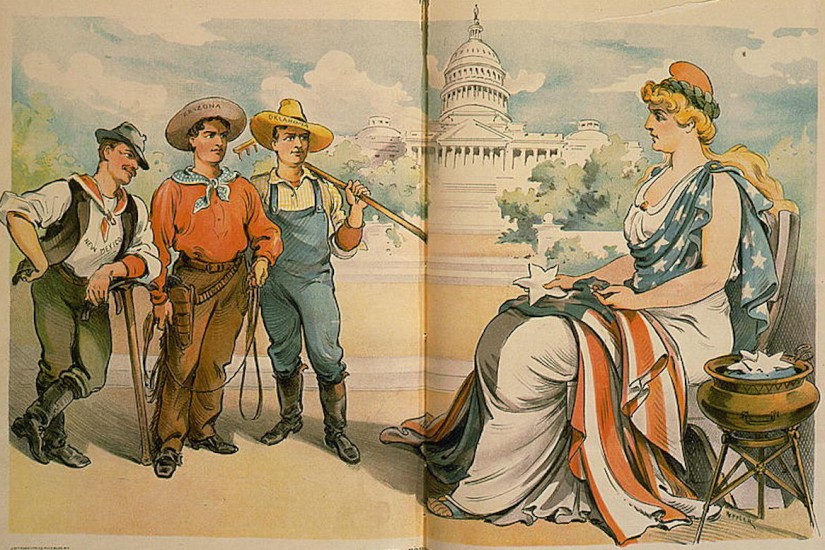The number of states in the union has been fixed at 50 for so long, few Americans realize that throughout most of our history, the addition of new states from time to time was a normal part of political life. New states were supposed to join the union when they reached a certain population, but in the late 19th century, population mattered a great deal less than partisanship. While McConnell is right to suspect that admitting Puerto Rico and the District of Columbia now would shift the balance in Congress toward the Democrats, the Republican Party has historically taken far more effective advantage of the addition of new states.
In 1889 and 1890, Congress added North Dakota, South Dakota, Montana, Washington, Idaho, and Wyoming—the largest admission of states since the original 13. This addition of 12 new senators and 18 new electors to the Electoral College was a deliberate strategy of late-19th-century Republicans to stay in power after their swing toward Big Business cost them a popular majority. The strategy paid dividends deep into the future; indeed, the admission of so many rural states back then helps to explain GOP control of the Senate today, 130 years later.
During the Civil War, the United States government had organized new territories in the West at a cracking pace, both to keep the Confederacy at bay and to bring the region’s mines and farmland under government control. The territories produced silver and gold, but didn’t attract the flood of settlers that would force immediate statehood, as the California gold strikes did in 1850. The war created a labor shortage, and there was work enough back East to give migrants pause before challenging the Apache, Comanche, Lakota, and Cheyenne, who controlled the West. Congress admitted Nevada in 1864, but by the end of the decade, the addition of new states had stalled. Then, after the 1870 readmission of Georgia, the last of the Confederate states, the drive to organize the West became entangled in the desperate struggle between Republicans and Democrats to control the nation.
The admission of Colorado, in 1876, showed the way. In the 1874 midterm elections, Republicans lost control of the House of Representatives for the first time since the Civil War. Just before Democrats took over, Congress struck a tentative agreement to admit two new states, Colorado and New Mexico, both controlled by Republican machines. Colorado had slightly fewer than 40,000 people in 1870, and New Mexico had more than 90,000. In March 1875, Congress let statehood for Colorado go forward before the upcoming election, but the admission of New Mexico stalled. A coalition of Democrats joined with eastern Republicans, who howled, according to an 1876 New York Times article, that New Mexico was inhabited by “ignorant, priest-ridden ‘Greasers’”—a slur for people of Mexican origin—and should not be given “the right to send two Senators to vote equally with those of New-York, Pennsylvania, and other great States of the Union.”
